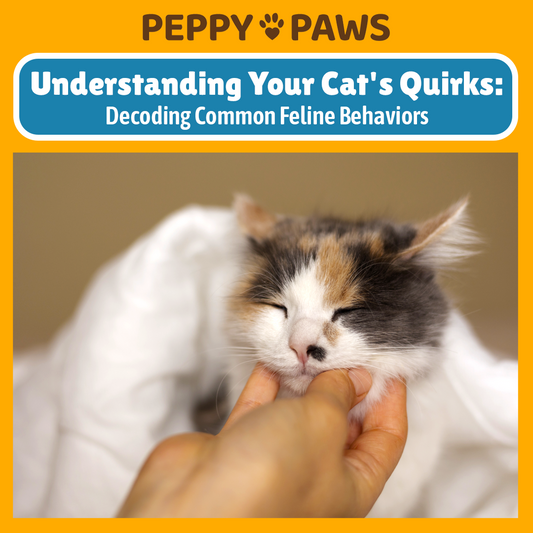
Understanding Your Cat's Quirks: Decoding Common Feline Behaviors
Cats are captivating creatures with their own unique personalities and quirks. Some of their behaviors might seem puzzling, but they are often ways for cats to communicate or show affection. Let’s explore a few common behaviors and what they mean, along with some tips for strengthening your bond with your feline friend.
1. Kneading

What It Is: If your cat is pressing their paws rhythmically into a soft surface, like a blanket or your lap, they’re kneading, a behavior often referred to as "making biscuits."
Why They Do It: Kneading is an instinct from kittenhood when kittens press against their mother’s belly to stimulate milk flow. Adult cats often knead to show they feel comfortable and safe, and it’s their way of marking territory with the scent released from their paw pads. When your cat kneads on you, it’s a sign of love and trust.
2. Zoomies

What It Is: Those sudden, high-energy bursts when your cat dashes around the house at top speed are affectionately known as the "zoomies."
Why They Do It: Cats have a natural urge to release energy, especially if they spend most of their time indoors. Zoomies allow them to satisfy their hunting instinct and blow off steam. You might notice your cat zooming around after a nap, which is a healthy sign they’re happy and energetic.
3. Headbutting (Bunting)

What It Is: A gentle nudge from your cat’s head against you is called bunting or headbutting.
Why They Do It: Cats have scent glands on their face, and bunting allows them to mark you with their scent. This gesture shows that they trust you and consider you part of their "territory." It’s a true sign of affection, so if your cat headbutts you, they’re expressing their bond with you.
4. Purring

What It Is: Purring is that soft, vibrating sound cats make, often when they’re relaxed or content.
Why They Do It: While cats usually purr when they’re happy, it can also be a way to self-soothe in moments of anxiety or even pain. Purring helps cats stay calm, making it a valuable self-comforting tool.
Tips for Bonding with Your Cat
-
Play Daily: Toys like feather wands or laser pointers engage their hunting instincts and provide exercise.
-
Respect Their Space: Cats are independent creatures, and allowing them personal space strengthens trust.
-
Maintain a Routine: Cats love consistency, so try to stick to regular times for feeding, play, and quiet time.
-
Reward Good Behavior: Using treats and gentle praise reinforces positive interactions.
Understanding these behaviors can deepen your connection with your cat, helping you appreciate their personality even more. Embrace these quirks—they’re what make cats so charming and unique!







